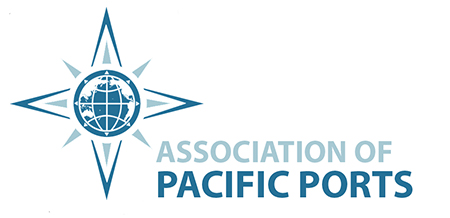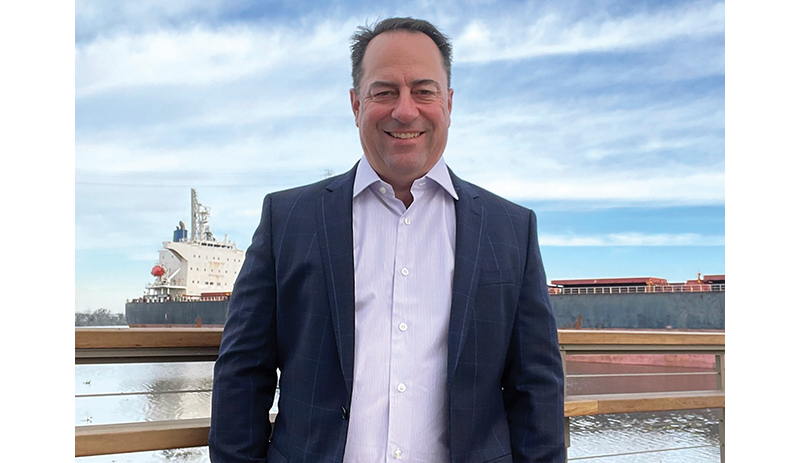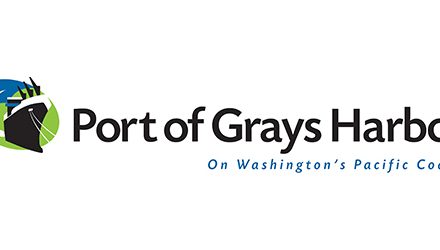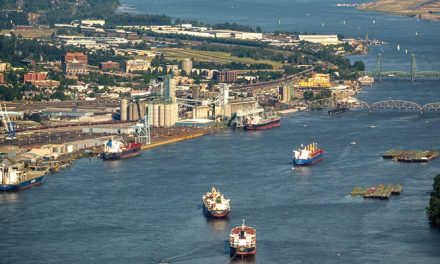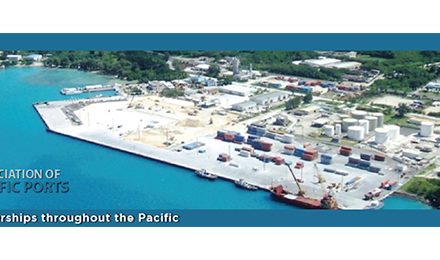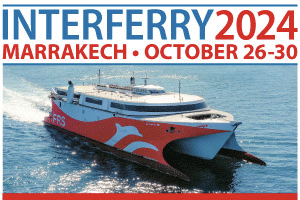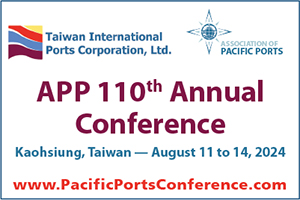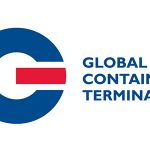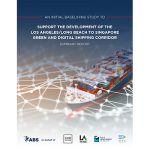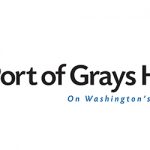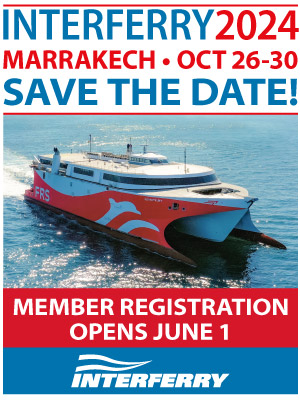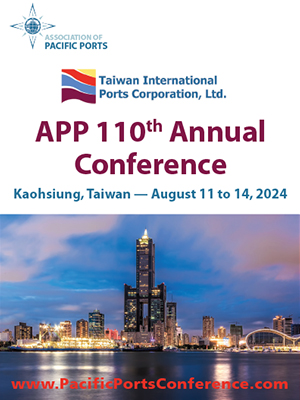From the February 2022 issue of Pacific Ports Magazine
Starting a new job is challenging at the best of times. Starting a new job in the middle of a pandemic takes that challenge to a whole new level. Luckily for the Port of Stockton, Port Director Kirk DeJesus thrives in a challenge. Carrying on the legacy of retired Director Richard Aschieris, DeJesus has not only steered the Port through these strange times but has handily increased business, addressed infrastructure needs, and kept true to Stockton’s environmental goals. Our Q&A with Mr. DeJesus provides valuable insights for port leaders on what a little bit of focus, determination, and discipline can achieve.
APP: Kirk, your bio shows quite a bit of diversity. Could you provide us with an overview of your career to date as well as what you consider to be your strengths for the position of Port Director?
KD: I was an Air Force pilot for 11 years before joining United Airlines to fly international commercial flights. Following 9/11, when many in the airline industry were furloughed, I started my own appraisal company. That business was going so well that, when I was called back to United a year later, I decided to continue on with my own company and did so until I sold it in 2008 – luckily, just before the global recession hit. In 2008, I joined a fertilizer packaging company which was later sold to Kinder Morgan, running operations for three facilities — two in Stockton and one in San Diego — and then expanding into business development for the Pacific Northwest region.
When the Port Director role became available in February 2021, I found myself identifying with a lot of the criteria the Commission wanted — someone who was business-centric; worked on the opposite side of the table from the Port and understood the priorities and issues for terminal operations; and had close ties to the community. I have lived in Stockton for over 22 years and as a side note, my wife’s great grandfather was one of the original port commissioners.
I’m fairly intuitive when it comes to operational and commercial aspects as well as management skills like budgeting and finances, and I’m very lucky to have a great staff and really strong directors in place for those areas that are more foreign to me — personnel and human resources, for example.
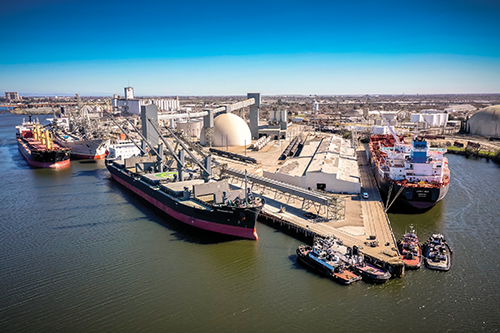
The Port of Stockton
APP: What has it been like coming into the position in the middle of a pandemic — and further, how has the Port of Stockton fared over the past two years?
KD: With 115 staff who are either working from home or spread out in different buildings, it’s been tricky trying to put names to faces. And we’re growing even more — we just hired a new director of real estate, and we currently have nine positions open with more to fill behind those. We’re working on a retrofit of our Administration office, so we’ll be able to accommodate all staff under one roof by mid-2023.
Regarding the Port during the pandemic, we’ve been fortunate from an operations perspective. This past year was the best we’ve ever had for both revenue and volume. In some ways, we’ve benefitted from the pandemic. We’ve seen a 31 percent increase in breakbulk logging that normally would have gone out in containers elsewhere. Because of restricted travel for ILWU members, rice that would have been exported through Sacramento came to Stockton because we had available labour.
APP: At the APP Conference in October, you had alluded to a new export facility in the works. Are you able to expand on that news now?
KD: Yes, it’s in the public record now although not quite finalized. We’ve been working with Denmar U.S. on their proposal to build and operate a new, state-of-the-art export facility for American natural soda ash coming from Green River, Wyoming. The planned volume would be significant —initially at 4.8 million tons per year with the potential to increase volumes to up to seven million tons. This would be a great benefit to the Stockton and San Joaquin County with the creation of over 439 jobs and $38.3 million in local labor income annually during the two-year construction phase. Once at full capacity, the operation of this new terminal is expected to create 189 jobs and $17.8 million labor income each year in 2023 and 2024. Beginning annually in 2025, operations will expand to create 323 jobs and $32.4 million in labor income ongoing. By 2025, annual state and local tax revenues will grow to approximately $5 million, including $2 million in direct taxes and an additional $3 million in state and local tax payments.
The project will require rail improvements at the Port in order to handle the additional capacity. At present, there’s a plan to build a loop track at the far western end of the west island, but our overall rail infrastructure is something we’ve been addressing as well.
One of the biggest limitations for the Port right now is our rail infrastructure, but we have a plan in place and are a part of the SB1 Grant for infrastructure improvements, including the rail bridge which, at present, is a single track which is used as the entry point for both the east and west islands. We’re in the design phase and working on grant proposals.
Another limitation that we’re keeping our eye on is the number of pilots who volunteer to come down the river, a more complicated trip than bringing ships into coastal ports. Currently, that are about 12 pilots out of 60 who work the river. It’s a concern as we continue to increase our throughput volume, so we’ve been having internal discussions on how we can encourage more pilots to volunteer.
APP: Are there additional opportunities on the horizon for the Port of Stockton?
KD: Yes, we’re working with the U.S. Army on conveyance of property about 10 miles south of us that would create a 505-acre inland intermodal terminal and we’re also working on bringing in containers on small vessels — about 2,000 TEUs. We’re limited on the size of the vessel because of our draft, but we see bringing containers here as being beneficial in taking some trucks off the road to alleviate congestion and air emissions. We haven’t handled containers in the past, but it’s something we’d like to do and could be a significant source of growth for us.
There are also opportunities related to agriculture products — specifically nuts — that go out from Oakland by container. Because there’s so much container congestion, we believe a good solution would be to have these exported as breakbulk. We’re working on that now.
APP: One issue I’d like to highlight for our readers is the efforts of the Port of Stockton to reduce air emissions.
KD: We’re quite proud of the many initiatives we have underway as well as plans to do even more. We’re moving toward electrification of all equipment at the port. So far, about 60 percent of our cargo handling equipment is zero-emission. We have 36 forklifts, two multi-function utility vehicles, and one rail mover that are now all electric. In addition to the Port’s own Clean Air Strategy, we work with the community under the Stockton Community Emission Reduction Plan as part of the state regulations which includes an electric vehicle blueprint extending beyond the Port. We’re also working on a state-funded grant for $100,000 per year to purchase five more vehicles. The grant would cover about half the cost.
That’s the on-land portion of our plan but we’re working with or tug and tow companies to develop ways they can retrofit their vessels — either a more efficient diesel solution or electrification. It’s a very expensive proposition though. And we’ve started looking at emission-capture systems for barges and vessels. There are some really interesting developments in that area, but the technology still needs to catch up to the requirements.
APP: You mentioned the costs of the transition to zero emissions. Are you worried this is putting you at a competitive disadvantage with other states?
KD: It is very expensive, but we’ve been able to secure about 80 percent of the funding through grants and we do see operational benefits. I don’t believe it’s putting us at a disadvantage – for a lot of the commodities that are coming through here, it wouldn’t make sense to travel to Washington or Oregon. Obviously, our bottom line could be better but it’s just the nature of the beast. The entire industry is going to have start implementing the same measures — California is taking the initiative to get to zero emissions by 2030 which is coming up quickly, but the rest of the nation and the world will be required to catch up.
APP: Last question. Looking to the future, what are your priorities for the Port?
KD: I’d like to see us become a net export port. I think the soda ash project and the addition of a few other bulk commodities would allow that to happen, and I’d like to see continued diversity in commodities going through the Port to be able to absorb market fluctuations while remaining viable.
Not so much a long-term goal but still a priority is our community outreach efforts — to let the community see what we actually do and the steps we’re taking to make the Port of Stockton environmentally sustainable and safe for the community. We’ve had a lot of luck with that to date. Initiatives like tours for children and the community so they can see what we do and general education of the issues and how we’re addressing them. We’ve seen some really good success on our efforts so far.
